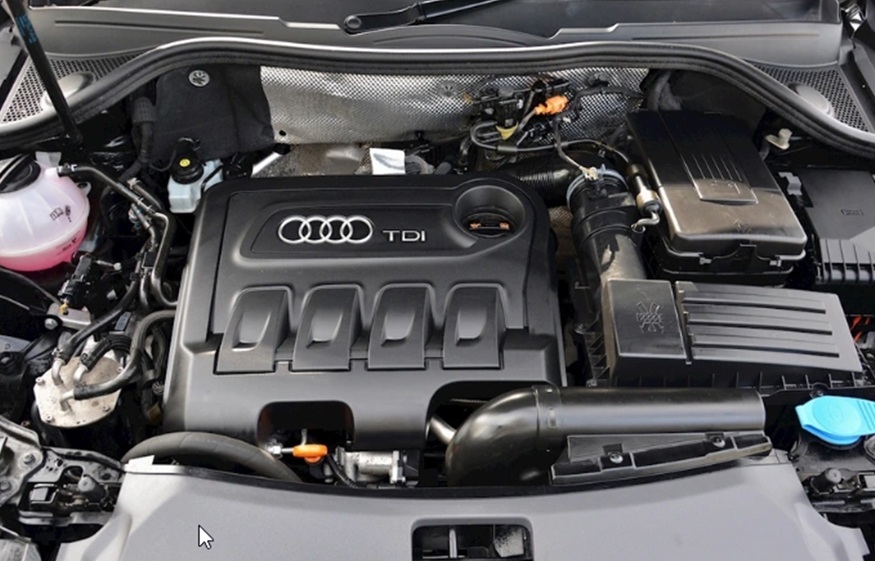How I Avoid Engine Regrets: The 3 Critical Tests Before Buying a Reconditioned Audi Engine
When an engine is sitting on a pallet looking freshly cleaned, it’s easy to get persuaded by paint and promises. Compression, leak-down, and borescope tests cut through the cosmetics and reveal the real story—ring seal, valve sealing, head-gasket health, and cylinder wall condition. I apply the same three tests whether I’m evaluating a reconditioned Audi engine, or any other replacement engine because the physics don’t change: good sealing equals good compression and low leak-down, and a borescope shows what numbers can’t explain
In practice, these tests saved me from two shiny duds and led me to the right buy. One “reconditioned” EA888 Gen 2 2.0T showed decent compression but 22 to 28% leak-down and vertical scoring on cylinder 3 under the borescope walked away. A “remanufactured” listing had impressive paperwork, yet the seller refused a borescope; that was another pass. My eventual pick was a reconditioned Audi engine with compression evenly within 8% across cylinders, leak-down 6 to 9%, and crisp crosshatch visible on all bores.
Compression test benchmarks I demand on a reconditioned Audi engine
Compression is my fast filter. I test warm, when possible, battery fully charged, fuel and spark disabled, throttle wide open, and all plugs removed so the starter spins fast and evenly. On most Audi turbo fours, healthy numbers typically land in the 170–200 psi range at sea level with no more than 10% variance cylinder-to-cylinder; V6/V8 values can differ by platform, so I always verify the spec by engine code. The absolute number matters less than uniformity, a 25–35 psi spread is a red flag. If a seller only allows a “cold” test (common with a used Audi engine on a pallet), I factor in that readings may be slightly lower, but I still require tight consistency. If a wet compression test (teaspoon of oil in the cylinder) raises pressure dramatically, that points to ring or cylinder wearinfo that’s critical whether I’m looking at a reconditioned Audi engine, or any other replacement engine.
Field lesson: one promising used Audi engine from a low-mile A5 donor gave me 185–188–186–151 psi. The seller said “it’ll come up warm.” We warmed it, re-ran, and cylinder 4 stayed low at 154 psi. I did a quick wet test; it jumped to 176 psi, which suggested ring sealing concerns or bore wear. That alone didn’t doom it, but the combination with the seller’s reluctance to do a borescope told me enough. In contrast, the reconditioned Audi engine I bought for my A4 logged 182–179–184–181 psi cold on a run stand and 190–188–191–189 psi warm with a solid battery number in line with a healthy replacement Audi engine and consistent with how a careful rebuilt Audi engine should present.
Leak-down test: how I diagnose ring, valve, or head-gasket issues on a reconditioned engine
Leak-down is the truth serum. I use a dual-gauge tester set to 100 psi, bring each cylinder to exact TDC on compression (both valves closed), lock the crank, and listen. Under 10% leakage is excellent; 10–15% is acceptable depending on age and build; 15–20% is caution territory; above 20% is a problem for anything but a known fresh break-in scenarioand even then, I expect a remanufactured Audi engine or a carefully rebuilt Audi engine to show better. Where the air escapes tell the story, hissing at the throttle body points to intake valves, tailpipe indicates exhaust valves, oil filler/dipstick tube suggests rings/cylinder walls, and bubbles in coolant imply head-gasket or casting issues. I run this on every reconditioned engine and used engines I’m considering.It is just as relevant to a remanufactured engines because it confirms the work matches the paperwork.
One real-world save: I tested a “freshly rebuilt” EA888 Gen 1 long block that idled beautifully on the seller’s run stand. Compression looked fine, but leak-down showed 18–20% on all four. Consistency across cylinders can mean unseated rings on a very fresh build—possible for a rebuilt Audi engine—but cylinder 3 sat at 24% and pushed air through the dipstick tube. The seller claimed it would “seat under load.” Maybe.
Borescope truths: what I look for inside cylinders on a reconditioned engine
Numbers can mislead; a borescope shows the metal. I use a 5.5 mm scope with a side-view mirror and inspect each cylinder for remaining, vertical scoring, and piston crown condition. This is essential on a reconditioned Audi engine or rebuilt Audi engine where only selected parts may have been replaced, and it’s a sanity check for a remanufactured Audi engine that claims factory tolerances.
Case in point: one “reconditioned” long block was immaculate outside, fresh paint, new gaskets. Compression was acceptable, but the borescope showed faint but continuous vertical lines on two cylinders and pooled oil sheen at the bottom of one bore. Leak-down on that cylinder was 21% with air through the dipstick. That combo told me the crosshatch was compromised and oil control would be a problemclassic early oil-consumption risk on certain Audi 2.0T variants. In contrast, the reconditioned Audi engine I purchased had uniform crosshatch on all bores, clean piston crowns, and no vertical scoring; valves showed even coloration.
Documentation, warm-up, and test protocol I follow when inspecting
Before I touch a wrench, I verify the engine code and compatibility with the ECU and accessories. Then I ask for proof: machining invoices, parts listpistons/rings/bearings/valves/guides/timing set, and assembly measurements for any rebuilt Audi engine or remanufactured Audi engine. For a reconditioned Audi engine, I want a clear scope of what was replaced and what was measured in-spec. For a used Audi engine, I ask for donor VIN, mileage proof, and a cold-start video if possible. I also clarify warranty terms and whether the seller will allow compression, leak-down, and borescope testing on-site. If they refuse basic, non-destructive tests, I treat that as a red flag, regardless of whether it’s a bargain replacement Audi engine or a top-dollar remanufactured unit.
My protocol is simple but strict: warm test when possible (on the donor car or a run stand) for best compression validity; otherwise, do a careful cold test and lean on leak-down and borescope. Battery at full charge, throttle wide open, fuel and spark disabled, and all plugs out for compression. For leak-down, I find exact TDC for each cylinder, no approximationsand listen methodically at intake, exhaust, and oil fill; I repeat any outlier. I finish with the borescope to explain anomalies. I’ve walked away from “perfect” paperwork that failed these fundamentals and bought a modest-looking reconditioned Audi engine that aced them. Across the board—reconditioned, rebuilt, remanufactured, or used—these steps have kept my replacement Audi engine choices honest, and the results have backed that up on the road.
Red flags and deal-makers I’ve seen while testing
Red flags that make me pause: a seller who won’t allow a borescope; compression spread over 12–15% between cylinders; leak-down above 20% on any hole; big jump on a wet compression test; visible vertical scoring; “fresh paint” but reused timing components; mismatched engine code; and vague “rebuilt” or “reconditioned” claims without parts lists or machining notes. For a remanufactured Audi engine, I expect documented clearances, torque specs, and a parts manifest with major internals listed; anything less is marketing, not manufacturing. On a used Audi engine, a “ran when pulled” video is nice, but leak-down and a borescope on the stand are what actually protect you. If a seller pushes me to “trust the warranty,” I remind myself that downtime plus install labour can dwarf any refund, especially on a replacement Audi engine.
Deal-makers are just as clear: uniform compression with a tight spread; single-digit leak-down (or very low teens with a sensible explanation, like truly zero-mile rings on a fresh rebuilt Audi engine); clean borescope views with intact crosshatch and no scoring; new timing set with receipts; updated PCV and known-issue parts addressed (common on certain Audi platforms); and cooperative sellers who understand why these tests matter. The reconditioned Audi engine I ultimately bought had all of that, plus a seller willing to run the engine warm on a stand, share machining invoices, and let me scope every cylinder without rushing. That experience reinforced my rule: whether I’m evaluating a reconditioned, rebuilt, used, or remanufactured Audi engine, the trio of compression, leak-down, and borescope, done right, turns a risky purchase into a confident replacement Audi engine install.





